2013-01-04 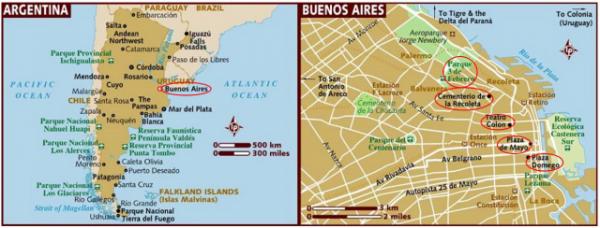
【Aiden in English】
Two weeks flew by on the cruise, and before I noticed, Mom and I were leaving the ship in the "Paris of the South"—Buenos Aires for good. We booked a day tour to La Recoleta Cemetery in the metropolitan center and the Argentine Estancia in the countryside. We drove through Palermo, the largest neighborhood, with a lovely district of parks, gardens, mansions, and embassies in front of us. However, most of our tour today was based on La Recoleta Cemetery. It looked like little architecture in a small world, with over 6,400 beautifully crafted mausoleums. It made us explore Baroque, Neoclassical, Neo-Gothic, Art Nouveau, and Art Deco styles with each crypt. The grand graves made the cemetery excellent and extensive. If I walked in alone, I would never walk out of the same entrance again! In 2013, CNN listed it as one of the world's top 10 most beautiful cemeteries. There were many notable Argentine personages in La Recoleta Cemetery. Maria Eva Duarte de Peron was one of them, and the Argentines used to call her Evita. Evita became the First Lady after her husband, Juan Peron, was elected the Argentine President. She advocated for women to win the right to vote and helped working-class people have a better life. When Evita died of cancer at the age of 33, her body was initially kept in the President's Residence. But some opponents hated her husband after he lost his power and tried to destroy her body. So, her coffin was moved to Italy. Not until years later was Evita brought back to her motherland and buried in a black marble tomb there. I had not known anything about Evita before. However, a sweeping melody sounded influential when Madonna sang "Don't Cry for Me Argentina" about her passion. Once out of the city, we entered the dustiest place across the Pampas I had ever been. The bus drove over an unpaved dirt road and cast specks of dust into the fresh air. We came to an Estancia or ranch where the timeless traditions of the Argentine gaucho are lovingly preserved. The gauchos originally came from vagabonds or orphanages and were used to roam the Pampas and work cattle for life. They generally dressed in a woolen poncho, neck-fastened bandana, pleated trousers, and long leather boots, and had no home or belongings other than what they carried on horseback. Some artists danced to popular folkloric music and looked like they were twisting their heels until they broke. Unlike tango, the lead and follow kept all movements at a distance and never had a close embrace to connect chest-to-chest in such a folkloric dance. There was a nice horsemanship racing competition among the gauchos. The object was to catch a ring on horseback with a little stick. I couldn't believe that a gaucho caught the ring three times straight. Before noon, I practiced riding a horse. It wasn't tough after I got used to it. When a traditional Asado al Asador or the gaucho-style country barbecue was served for lunch, featuring famous Argentine beef, I had no stomach for anything but computer games. The folkloric dancers performed one last time after everyone else was stuffed to the gills with food. Finally, we had to say farewell and return to the bus. We were sent to the hotels instead of returning to the cruise ship, and I was pretty sure this would add to my memorable cruise experience. 【红霞译】
两个星期游轮上的良辰美景不觉已近尾声,我和妈妈将在“南美巴黎”布宜诺斯艾利斯“好空气”下船,并于今天安排了一日游,打算前往位于市中心的雷科莱塔“回忆”公墓和郊区阿根廷农庄游览观光。
旅游大巴从首都巴勒莫“宽湾”区穿过,公园、花坛、别墅、大使馆簇拥排列在道路两旁,我们此行主要为了参观名扬全球的雷科莱塔公墓,那里有巴洛克式、新古典式、新哥特式、新艺术流派、新学院风格等大大小小的陵园超过6,400,建筑设计独具匠心,墓地本身很大,假如我独自一人进来转悠,恐怕连回去的路也找不到,2013年美国有线电视新闻网将此地列为世上十大最漂亮的“永久家园”。 阿根廷许多名门望族都长眠于雷科莱塔公墓,玛丽亚·伊娃·杜阿尔特·庇隆即阿根廷人心目中的艾薇塔“生命”就是其中一位,艾薇塔因丈夫胡安·庇隆“神慈·磐石”出任国家总统而成为阿根廷第一夫人,不仅积极为妇女赢得选举权力,而且还帮助劳动阶层改变生活状况,33岁那年死于癌症,其遗体曾一度保留在总统官邸,后因庇隆政府被推翻、反对党试图清除残余势力而不得不“移居”意大利,直到数年后才重返家园并安葬在眼前这个黑色大理石墓地之中。此前我并不了解艾薇塔,但对反映艾薇塔心声、由麦当娜悲情演唱的《阿根廷别为我哭泣》印象深刻。
离开雷科莱塔公墓后,我们长驱直入布宜诺斯艾利斯郊外,盛夏之际,素有“粮仓肉库”美誉的彭巴斯“平原”“黄云翠浪千千亩”。大巴行驶在广阔天地,身后掀起层层尘土,几乎遮住了半个天空,我们造访的阿根廷农庄至今仍保留雇用南美草原牛仔──高楚人“流浪者”的传统习俗,这些牛仔多来自被遗弃的孤儿,流浪于草原各地,靠放牛谋生,别看他们身着羊毛披风,颈套手帕,灯笼裤外加长皮靴,实际上除马背上丁点盘缠之外其它一无所有。与此同时,农庄请来两位艺人为我们表演民族舞蹈,他们的脚后跟好像一直不停地旋转,直到转不动为止,与探戈不同,领舞与伴舞之间始终保持距离,两人从不胸对胸紧密贴在一起。
高楚人马术比赛令我激动,每位参赛者坐在马背上,快速疾驰将吊挂的指环套在手上拿的小木棒上,我简直不敢相信,有一位竟能连中三次,接下来轮到我骑马溜弯,好不逍遥。午餐时大家开始享用高楚人烤肉串,可我没啥胃口,只好靠玩电子游戏充饥,酒足饭饱之后舞蹈家再度登台献艺。 终于到了告别时刻大家依依不舍,直至乘车返回酒店住地才逐渐正视现实,这下真的要各奔东西,我们只能把游轮留下的美好记忆铭刻心中。
Today in History(历史上的今天):
2011: 报复心理(Revenge) 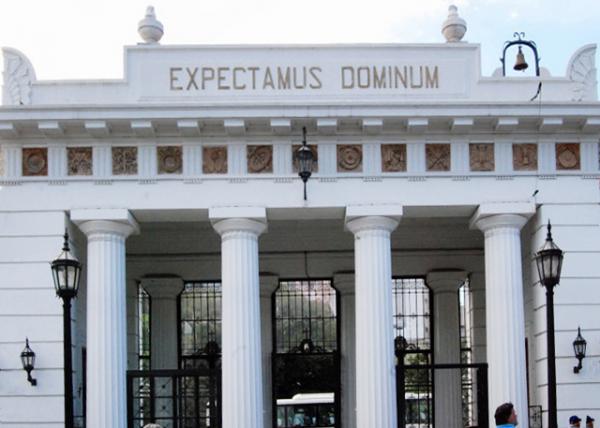 Recoleta Cemetery Renowned for Its Elaborate Mausoleums & Statues, Making It a Significant Cultural & Historical Site Recoleta Cemetery Renowned for Its Elaborate Mausoleums & Statues, Making It a Significant Cultural & Historical Site
(雷科莱塔国家公墓·以其精美的陵墓和雕像而闻名,成为重要的文化和历史遗迹) 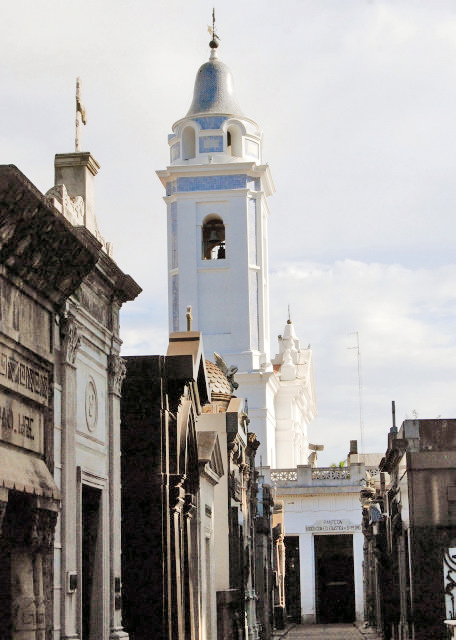
Basilica of Our Lady of the Pillar, Completed in 1732 (纪念柱圣母大教堂·1732年竣工)
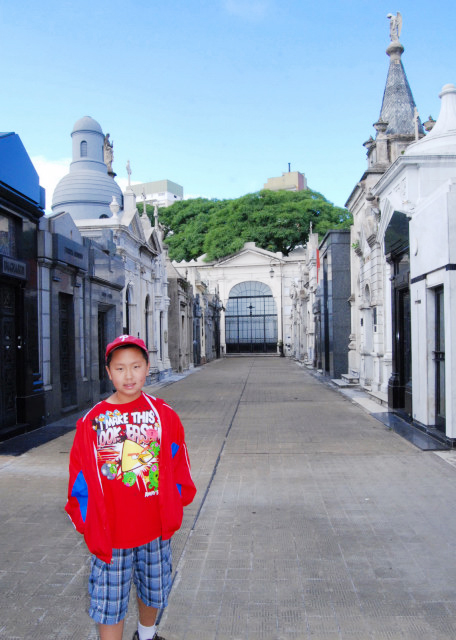
The Art-Rich Site w/ Famous Mausoleums, Reflecting the Wealth & Status of the Families (著名艺术性陵墓·反映家族的财富和地位 01-04-2013) 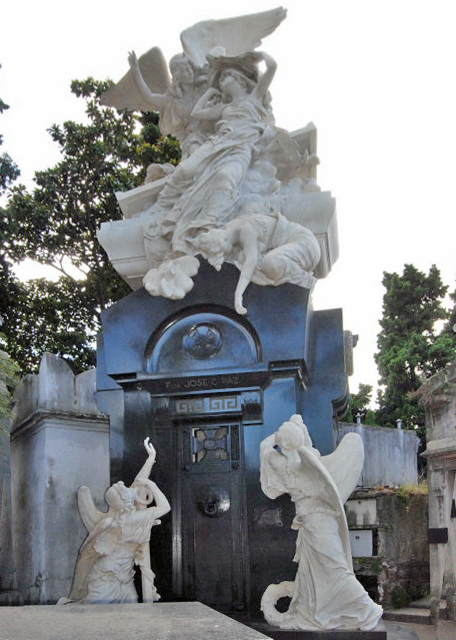
Paz Family Tomb in Black Stone Structure (帕兹“和平”家族之墓·黑色石头结构)
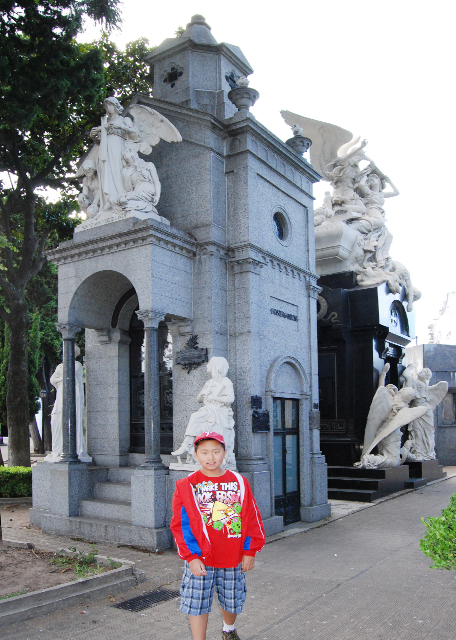
Paz Family Tomb in the Art Deco Style Adorned w/ White Marble Angels in a Turn-of-the-20th-Century dress (帕兹家族之墓·学院派式,建有身着20世纪服饰的白色大理石天使 01-04-2013) 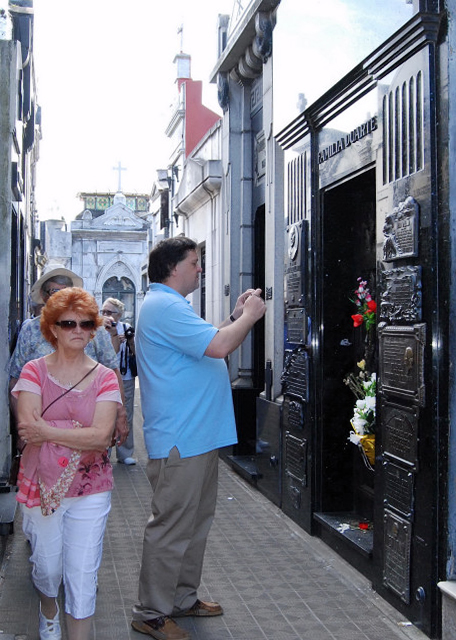
Eva Peron's Tomb, a Place of Pilgrimage (伊娃·裴隆之墓——朝圣地) 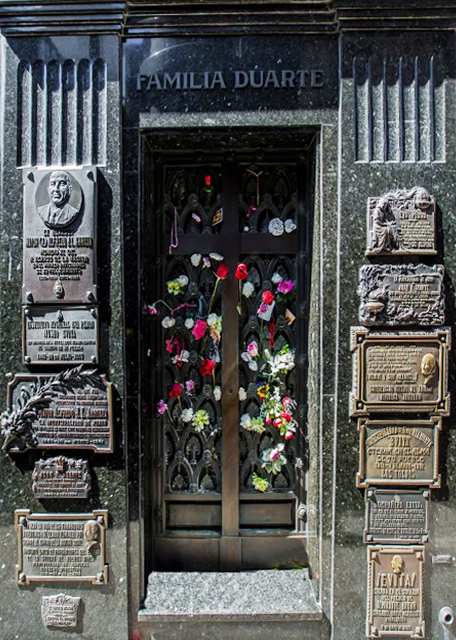
Evita's Resting Place in the Duarte Family Mausoleum (艾薇塔的安息之地·杜阿尔特“财富的守护者”家族的陵墓) 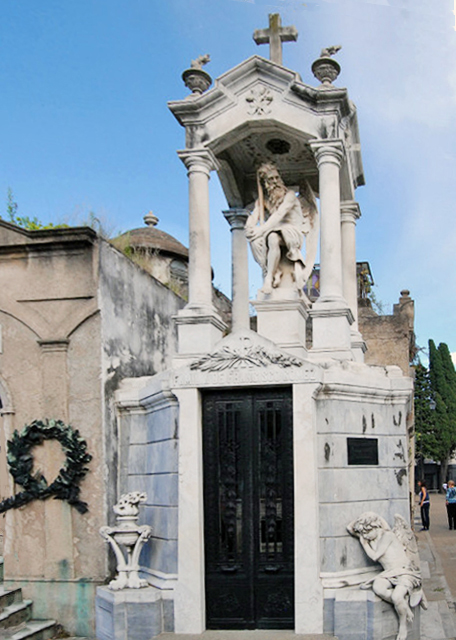
Familia de Francisco Gomez Decorated w/ the Most Photographed Angel (弗朗西斯科·戈麦斯“自由人·人类之子”家族之墓——饰有最上镜的天使) 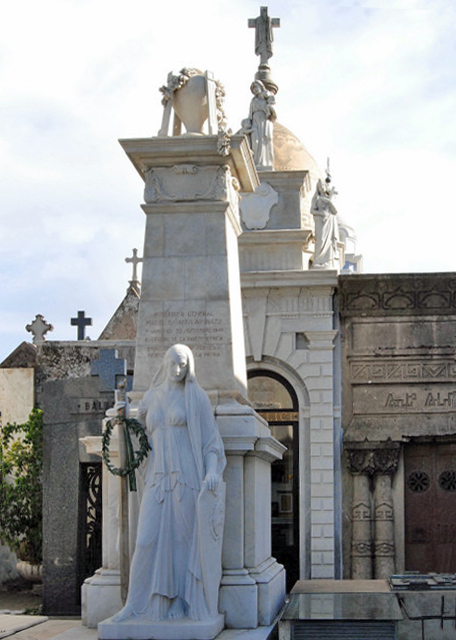
Tomb of General Miguel Estanislao Soler, Incorporated Allegorical Figures Representing Military Action, Victory, & Argentina Itself (阿根廷独立战争米格尔·埃斯塔尼斯劳·索莱尔将军之墓——融入了象征着军事行动、赢得胜利以及阿根廷本土的寓言人物) 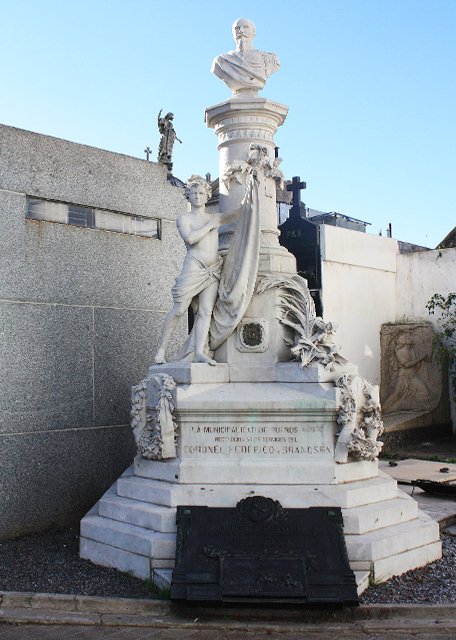
Tomb of French-Born Colonel Federico de Brandsen Fought for Argentina in the War w/ Brazil (法国出生的费德里科·布兰森上校之墓——在阿根廷与巴西的战争中代表阿根廷作战)
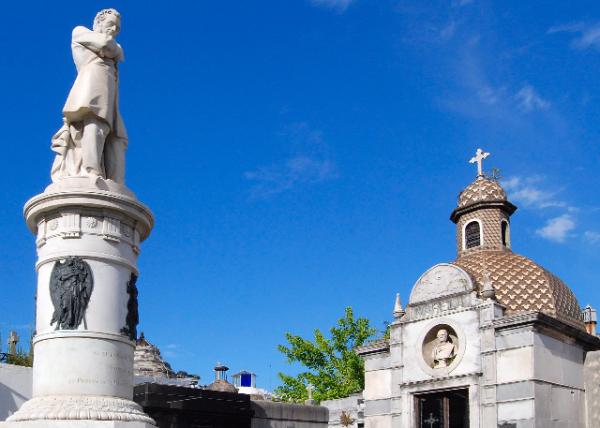 Lawyer & Politician Valentín Alsina @ L & Writer Florencio Varela Lawyer & Politician Valentín Alsina @ L & Writer Florencio Varela
(左:律师与政治家瓦伦丁·阿尔西纳 右:作家弗洛伦西奥·巴雷拉) 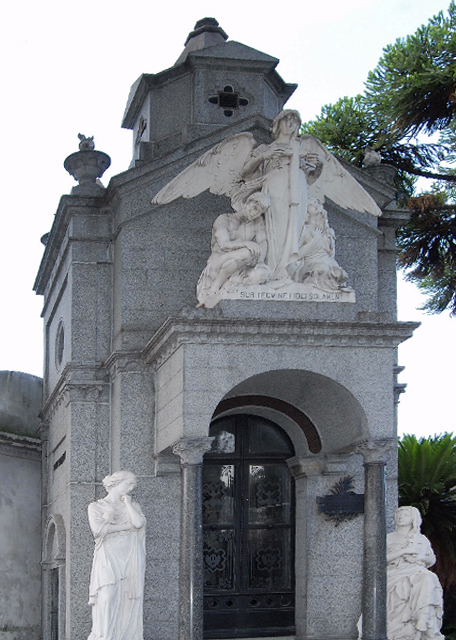
Lawyer, Businessman, & Landowner Ramón López Lecube, the Only in the Country w/ 2 Sculptures Located on the Sides of Its Front Door (律师、商人和地主拉蒙·洛佩斯·勒库贝“保护·狼之后代·立方体”——全国唯一一座在正门两侧有两座雕塑的陵墓) 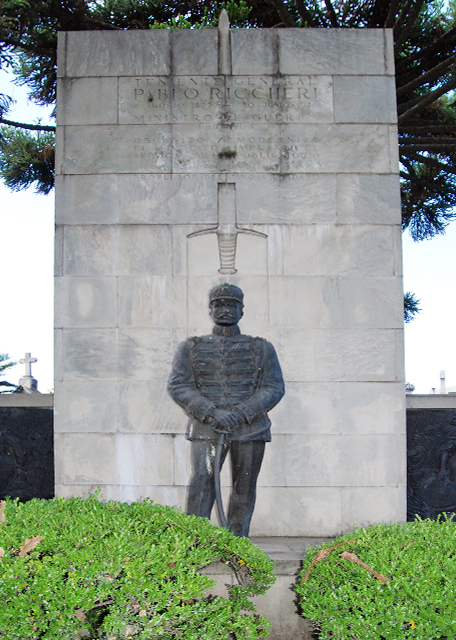
General Pablo Riccheri Served as Minister of War for the Modernization of the Army & Compulsory Military Service (巴勃罗·里基耶里“谦卑·力量”将军——推动军队现代化和义务兵役制)
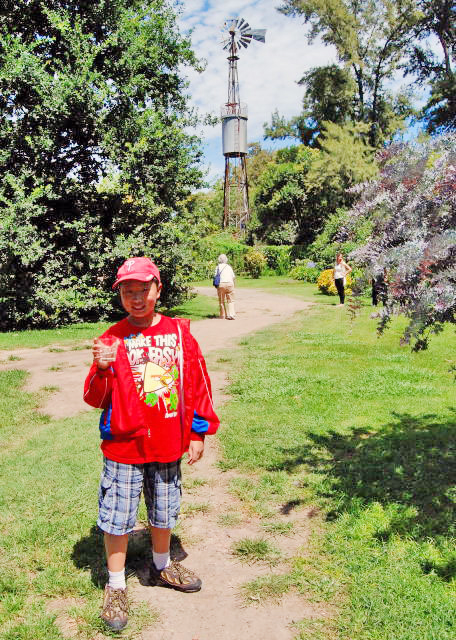
Argentine Estancia Woven into the Very Fabric of the Country's History (阿根廷农园·其故事深入交织在该国历史的肌理之中 01-04-2013) 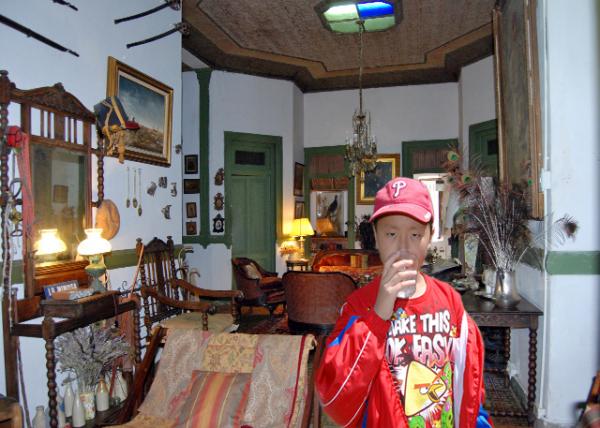 Family Rm @ Estancia (农园·家庭室 01-04-2013) Family Rm @ Estancia (农园·家庭室 01-04-2013)
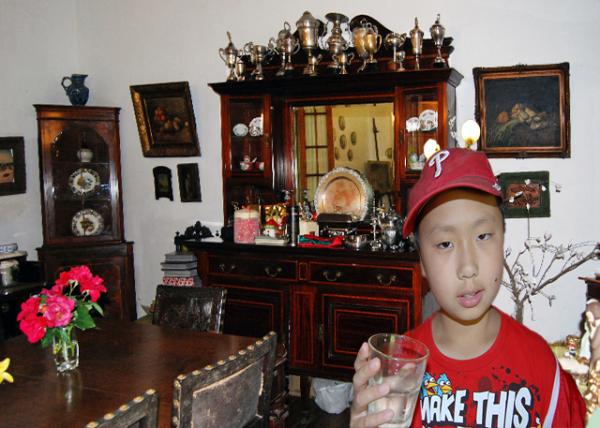 Kitchen @ Estancia (农园·餐厅 01-04-2013) Kitchen @ Estancia (农园·餐厅 01-04-2013)
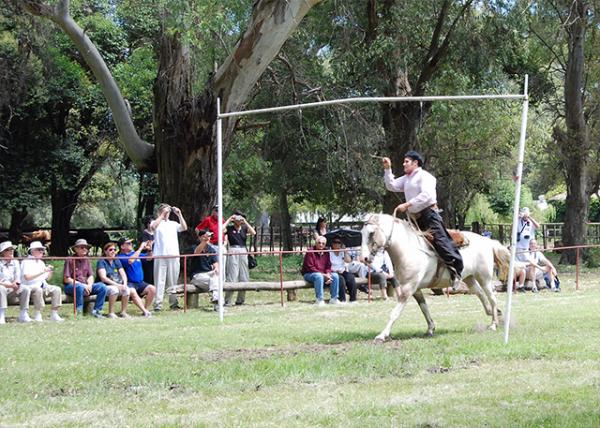 Horsemanship Demo @ Estancia Horsemanship Demo @ Estancia
(农庄·骑术表演 01-04-2013)
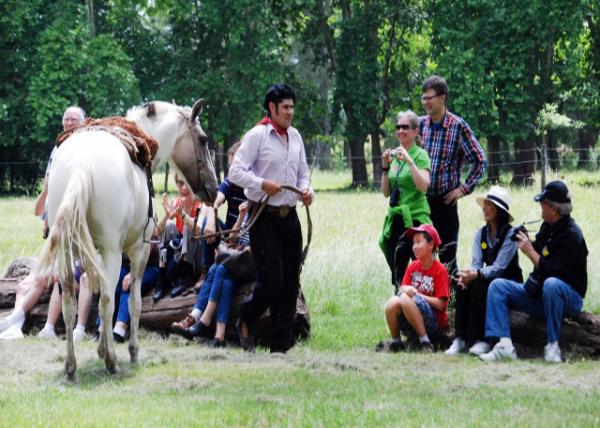 Meet the Performer @ Estancia Meet the Performer @ Estancia
(农庄·与表演者见面 01-04-2013) 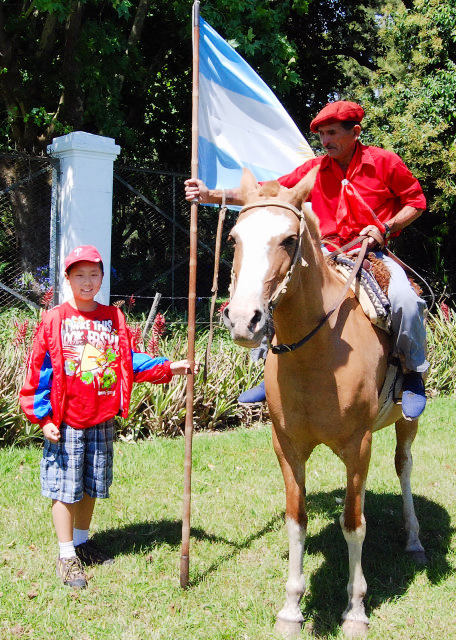
Gaucho @ Estancia (农庄·南美草原牛仔 01-04-2013) 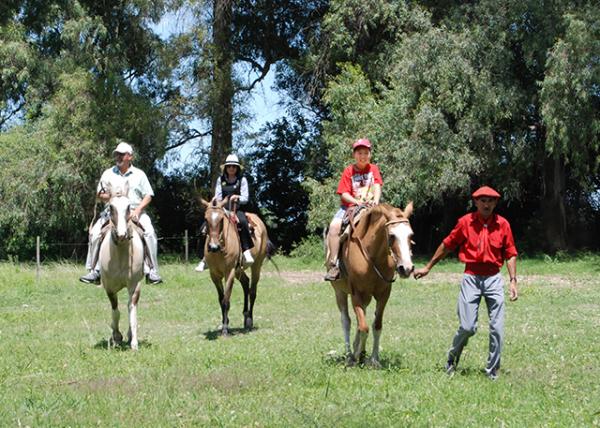 Horse Ride @ Estancia (农庄·骑马 01-04-2013) Horse Ride @ Estancia (农庄·骑马 01-04-2013)
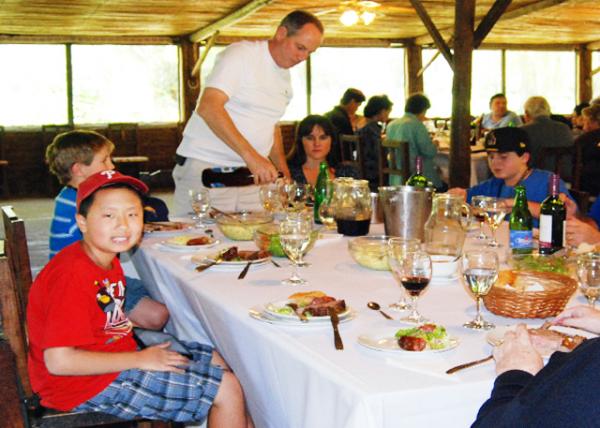 Asado al Asador @ Estancia Asado al Asador @ Estancia
(农庄·阿萨多“金属框架”烤炉烤肉串 01-04-2013) 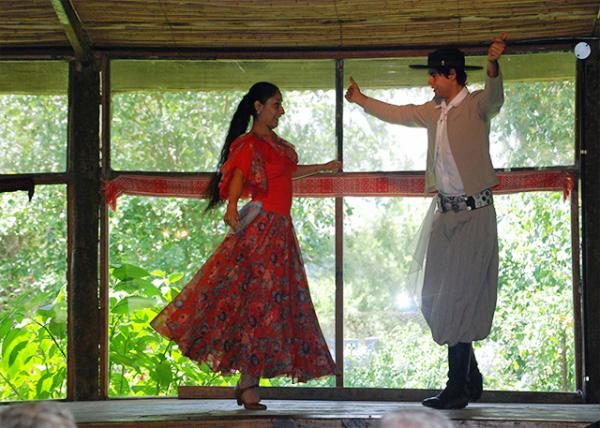 Chacarera Folkloric Dance Before Lunch @ Estancia Chacarera Folkloric Dance Before Lunch @ Estancia
(农庄·午餐前查卡雷拉“农夫”民间舞表演) 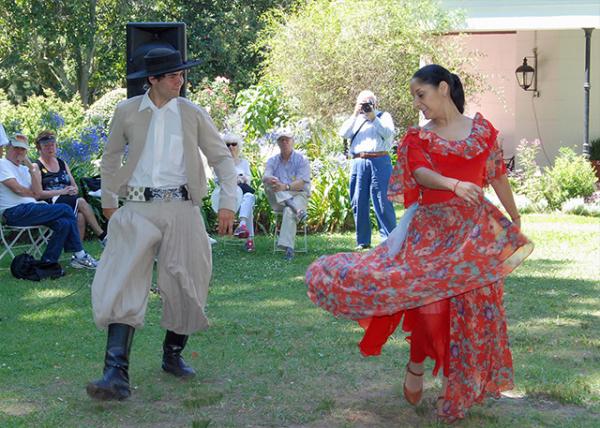 Chacarera Folkloric Dance After Lunch @ Estancia Chacarera Folkloric Dance After Lunch @ Estancia
(农庄·午餐后查卡雷拉“民间舞蹈与音乐”表演)
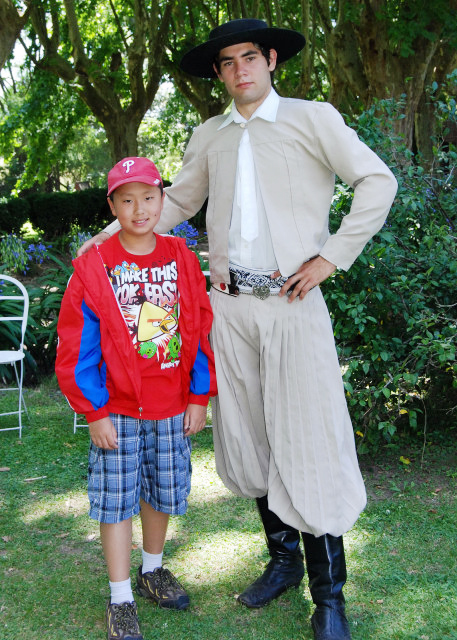
Chacarera Dancer @ Estancia (农庄·查卡雷拉舞者 01-04-2013) 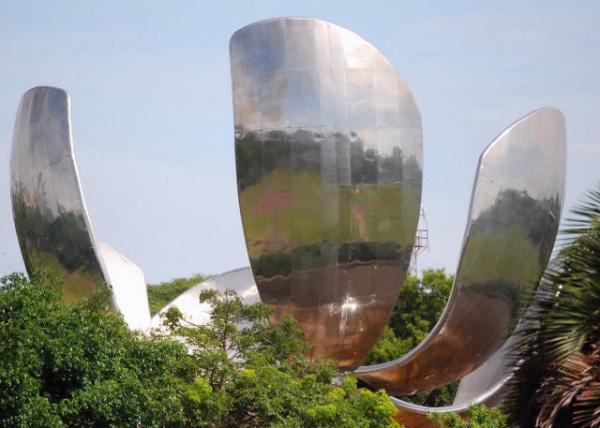 Floralis Genérica, Probably the World's 1st Mobile Public Sculpture Controlled by Hydraulics & Photoelectric Sensors Floralis Genérica, Probably the World's 1st Mobile Public Sculpture Controlled by Hydraulics & Photoelectric Sensors
(雕塑《阿根廷钢花》·可能是世界上第一个由液压和光电传感器控制的移动公共雕塑) 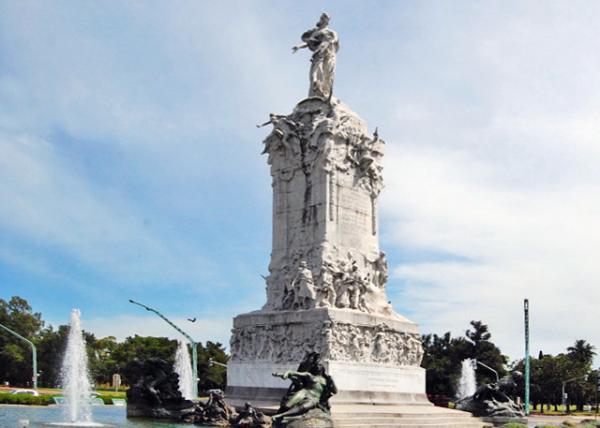 Monument to the Spaniards Commemorating the Centenary of Argentina's Independence from Spain & Symbolizing the Cultural Ties Between the Two Nations Monument to the Spaniards Commemorating the Centenary of Argentina's Independence from Spain & Symbolizing the Cultural Ties Between the Two Nations
(《西班牙人》纪念碑·纪念阿根廷脱离西班牙独立一百周年,象征两国之间的文化联系) 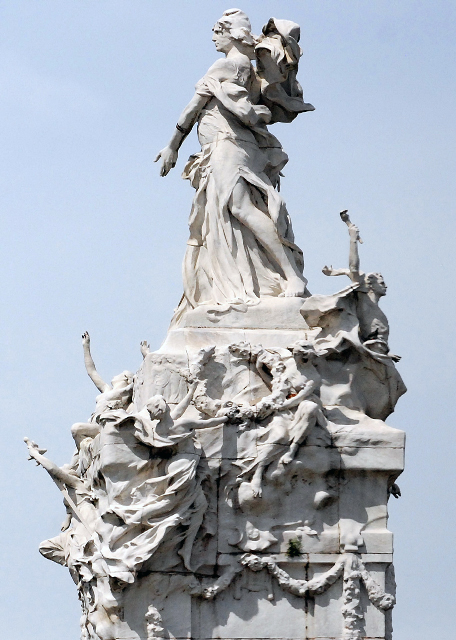
Monument to the Magna Carta and the Four Argentine Regions or Monument to the Spaniards w/ Symbolic Figures Representing the Country's 4 Main Regions: the Andes, the Pampa, the Chaco, and the Río de la Plata (《大宪章和阿根廷四大地区》纪念碑即《西班牙人》纪念碑·刻象征该国四大主要地区的人物:安第斯“高耸的山脊”山脉、潘帕斯“草原”、查科“低地平原”和普拉塔“银”河流域) 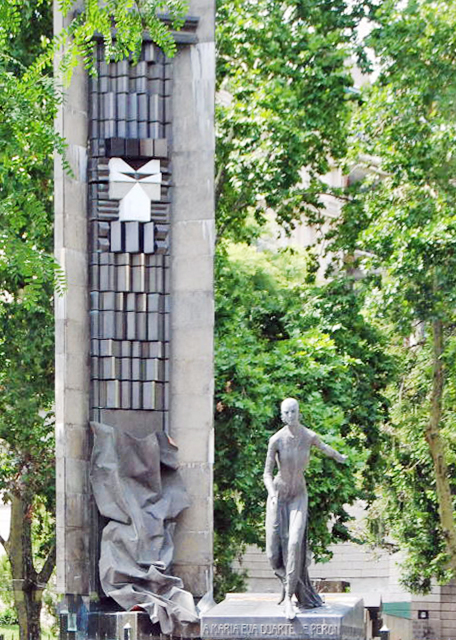
Monument to Eva Peron @ National Library (位于国立图书馆的《伊娃·裴隆》纪念碑) 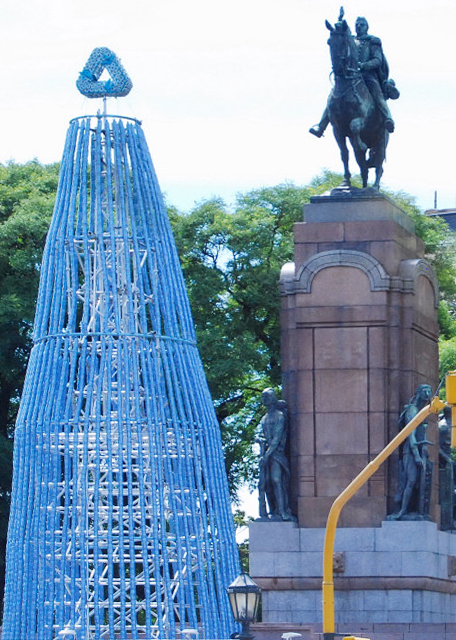
Monumento al General Carlos Maria de Alvear (《卡洛斯·玛丽亚·阿尔维尔“自由人·挚爱·光明之地”将军》纪念碑) 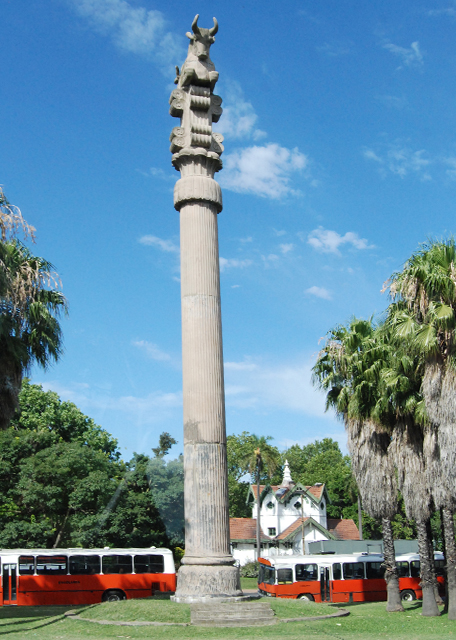
Column of the Persian Temple @ Islamic Republic of Iran Square (伊朗伊斯兰共和国广场·波斯“分隔”神庙柱)
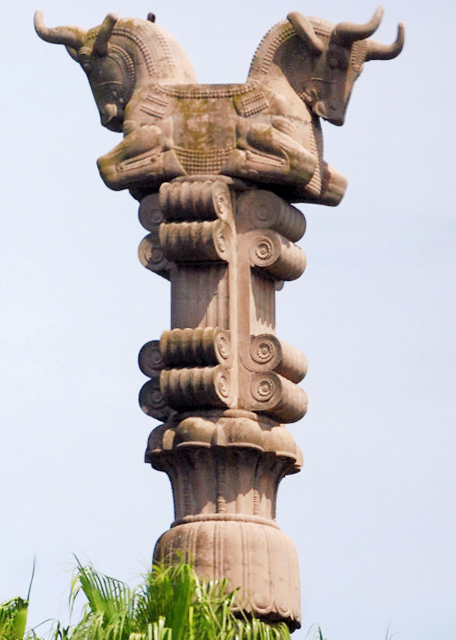
Persepolis Column Depicting Double-Headed Animals (波斯石柱·描绘双头动物) 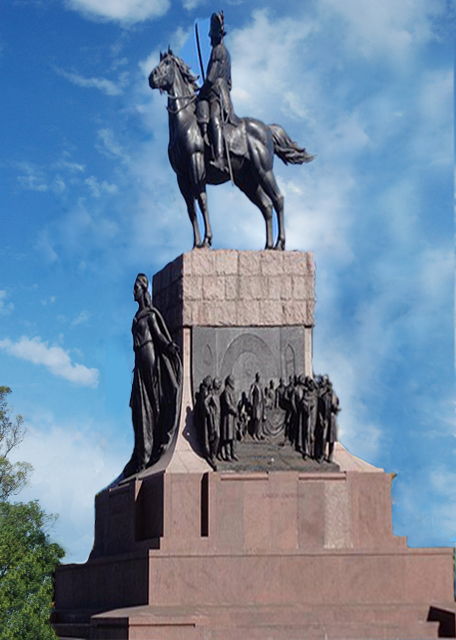
Monument to Justo José de Urquiza Symbolizing His Role as a Military Leader & Historical Figure (《胡斯托·何塞·德·乌尔基萨》纪念碑——象征着他作为军事领袖和历史人物的丰功伟绩)
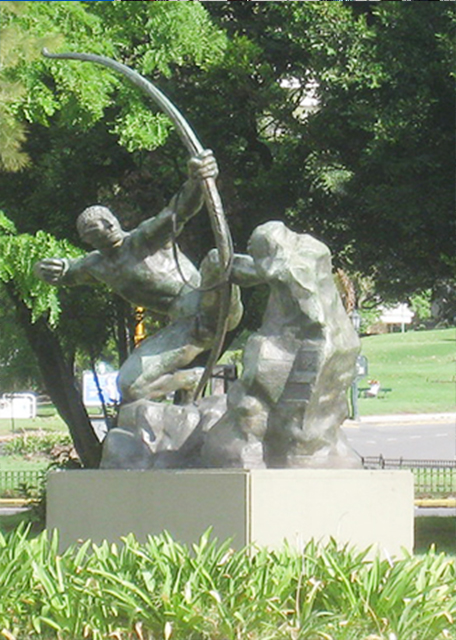
Hercules the Archer 《射手赫拉克勒斯“大力神”》 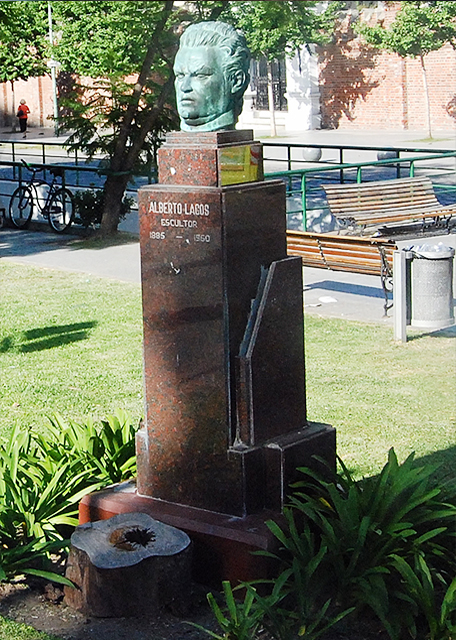
Bust of Alberto Lagos, an Argentine Sculptor & Ceramist (《卡洛斯·泰斯“高贵·湖泊”》半身像——阿根廷雕塑家和陶艺家) 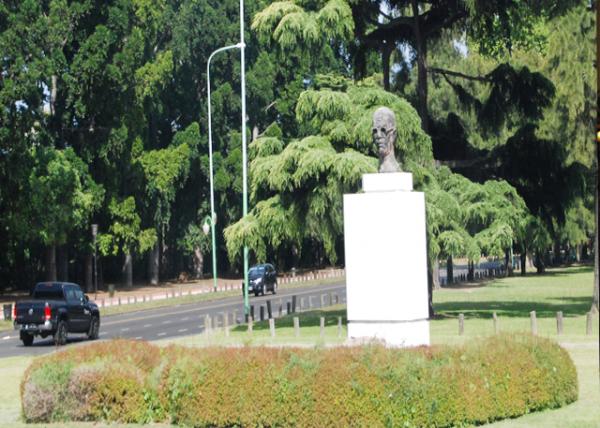 Plaza Republic of Ecuador, Home to Artistic Sculptures & Fountains Plaza Republic of Ecuador, Home to Artistic Sculptures & Fountains
(厄瓜多尔“赤道”共和国广场·艺术雕塑和喷泉的所在地)
 Monument to José de San Martín, Worldwide, at least 54 Equestrian Statues of José de San Martín, including at least 40 Replicas, Almost All of Them Being Copies of this Statue in Buenos Aires Monument to José de San Martín, Worldwide, at least 54 Equestrian Statues of José de San Martín, including at least 40 Replicas, Almost All of Them Being Copies of this Statue in Buenos Aires
(《何塞·圣马丁“神助·战神圣徒”》纪念碑——全世界至少有54座何塞·圣马丁骑马雕像,其中包括至少40座复制品,几乎所有复制品都是布宜诺斯艾利斯这座雕像的复制品) 
Monument to Roque Saenz Pena, an Argentine Politician & Lawyer (阿根廷政治家兼律师《罗克·萨恩斯·佩纳“休憩·神圣后裔·岩石”》纪念碑)
 Bar & Grill (酒吧和烧烤店) Bar & Grill (酒吧和烧烤店)
 Dinner @ Bar & Grill Dinner @ Bar & Grill
(酒吧和烧烤店·晚餐 01-04-2013)  Los Talleres (烤肉台) Los Talleres (烤肉台)
 Yerba Mate, a Traditional South American Beverage Made from the Dried Leaves of the Ilex paraguariensis Plant Yerba Mate, a Traditional South American Beverage Made from the Dried Leaves of the Ilex paraguariensis Plant
(马黛茶“葫芦草”·由巴拉圭冬青干叶制成的传统的南美饮料 01-04-2013) Crosslinks(相关博文): Argentina(出游阿根廷)
South America(漂流南美洲) |
